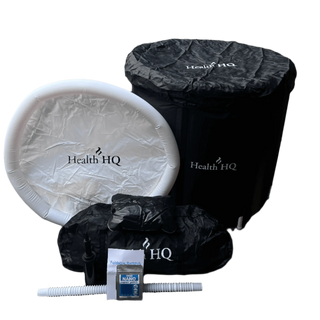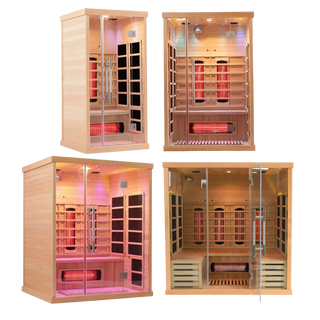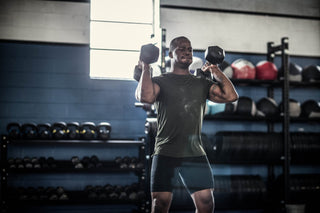Long muscle length training – The secret to unlocking more gains
What is long muscle length training?
Long muscle length training is performing exercises where the muscles you’re targeting are placed under load while they are stretched. It is even better when the exercise is hardest when the muscle is at a longer length. An example of one of these exercises is the Romanian Deadlift. In the Romanian Deadlift the movement gets harder the more horizontal your torso gets. However, as you are hinging forwards your hamstrings become more stretched as your hamstrings cross the hip joint.
What are the benefits?
The reason why everyone seems to be talking about long muscle length training is its effects on muscle growth. Wolf et al. (2023) found training with a partial range of motion at longer muscle lengths possibly caused more hypertrophy when compared to full range of motion. Kassiano et al. (2023) also found training at longer muscle lengths was optimal for muscle growth. There is not any concrete evidence of why longer muscle lengths elicit more muscle growth, but it could be due to the increase in mechanical tension. When the muscle is placed under load while stretched there is more mechanical tension. As mechanical tension is the main driver of muscle hypertrophy; more mechanical tension equals more muscle growth. Also, training at long muscle lengths may increase sarcomere length which can cause increases in muscle size (Zabaleta-Korta et al., 2023).
However, not all muscles seem to respond as well to long muscle length training. Ottinger et al. (2023) found that muscles that are active on the descending limb on of the length-tension curve seem to benefit more from long ranges on motion. This means muscles that are active when they are stretched past its resting length see greater benefits from long muscle length training. An example of this is the quadriceps vs the biceps. The quadriceps is primarily active on the descending limb on the length-tension curve (i.e. when the quads are longer than its resting state which is standing). This means more knee flexion during quad exercises will cause more hypertrophy. The biceps however are only active on the ascending portion of the length-tension curve (i.e. when the biceps are shorter than their resting state). This means they don’t see as much benefit from long muscle length training
Outside of muscle hypertrophy, long muscle length training also improves flexibility. Training at long muscle lengths stretches the muscles and also allows you to become strong in the longer ranges of motion.
How to implement it:
There are a variety of ways to implement this style of training. Firstly, is choosing exercises that emphasize the stretched portion of the movement. This can include Romanian Deadlifts for the Hamstrings, Sissy Squats for the quadriceps, full range of motion bent over rows for the back, or cable flys for the chest. When doing these exercises start off slow, use less weight than normal, and focus on technique. To take this even further you can implement long length partials. This is when you only perform the bottom half of the movement when the muscle is the most stretched. This can allow you to add more weight and really overload the stretched part of the movement. This has been shown to be better than full range of motion in new lifters, but in experienced lifters there is little difference (Wolf et al., 2024).
Sample of an upper body training session using long muscle length training:
- Dumbbell Incline Press – 3 sets, 6-8 reps
- Single Arm Cable Rows – 3 sets, 8-10 reps
- Cable Fly’s (long length partials) – 2 sets, 10-12 reps
- Lat Prayers (long length partials) – 2 sets, 10-12 reps
- Cable Lateral Raises (set cable just below wrist height) – 3 sets, 8-10 reps
- Overhead Triceps Extensions – 2 sets, 10-12 reps
- Incline Curls – 2 sets, 10-12 reps
Conclusion:
In summary, emphasising the stretch and training at longer muscle lengths has a been shown to be beneficial for muscle growth. You can implement this style of training through choosing exercises that emphasize the stretched portion of the movement and doing long length partial reps. However, it is important to start out slow and use less weight to start off with.
References:
Kassiano, W., Costa, B., Nunes, J. P., Ribeiro, A. S., Schoenfeld, B. J., & Cyrino, E. S. (2023). Which ROMs lead to Rome? A systematic review of the effects of range of motion on muscle hypertrophy. The Journal of Strength & Conditioning Research, 37(5), 1135-1144.
Ottinger, C. R., Sharp, M. H., Stefan, M. W., Gheith, R. H., de la Espriella, F., & Wilson, J. M. (2023). Muscle hypertrophy response to range of motion in strength training: a novel approach to understanding the findings. Strength & Conditioning Journal, 45(2), 162-176.
Wolf, M., Androulakis-Korakakis, P., Fisher, J., Schoenfeld, B., & Steele, J. (2023). Partial vs full range of motion resistance training: A systematic review and meta-analysis. International Journal of Strength and Conditioning, 3(1).
Wolf, M., Korakakis, P. A., Piñero, A., Mohan, A. E., Hermann, T., Augustin, F., ... & Schoenfeld, B. J. (2024). Lengthened Partial Repetitions Elicit Similar Muscular Adaptations as a Full Range of Motion During Resistance Training in Trained Individuals.
Zabaleta-Korta, A., Fernández-Peña, E., Torres-Unda, J., Francés, M., Zubillaga, A., & Santos-Concejero, J. (2023). Regional Hypertrophy: The Effect of Exercises at Long and Short Muscle Lengths in Recreationally Trained Women. Journal of Human Kinetics, 88, 259.








